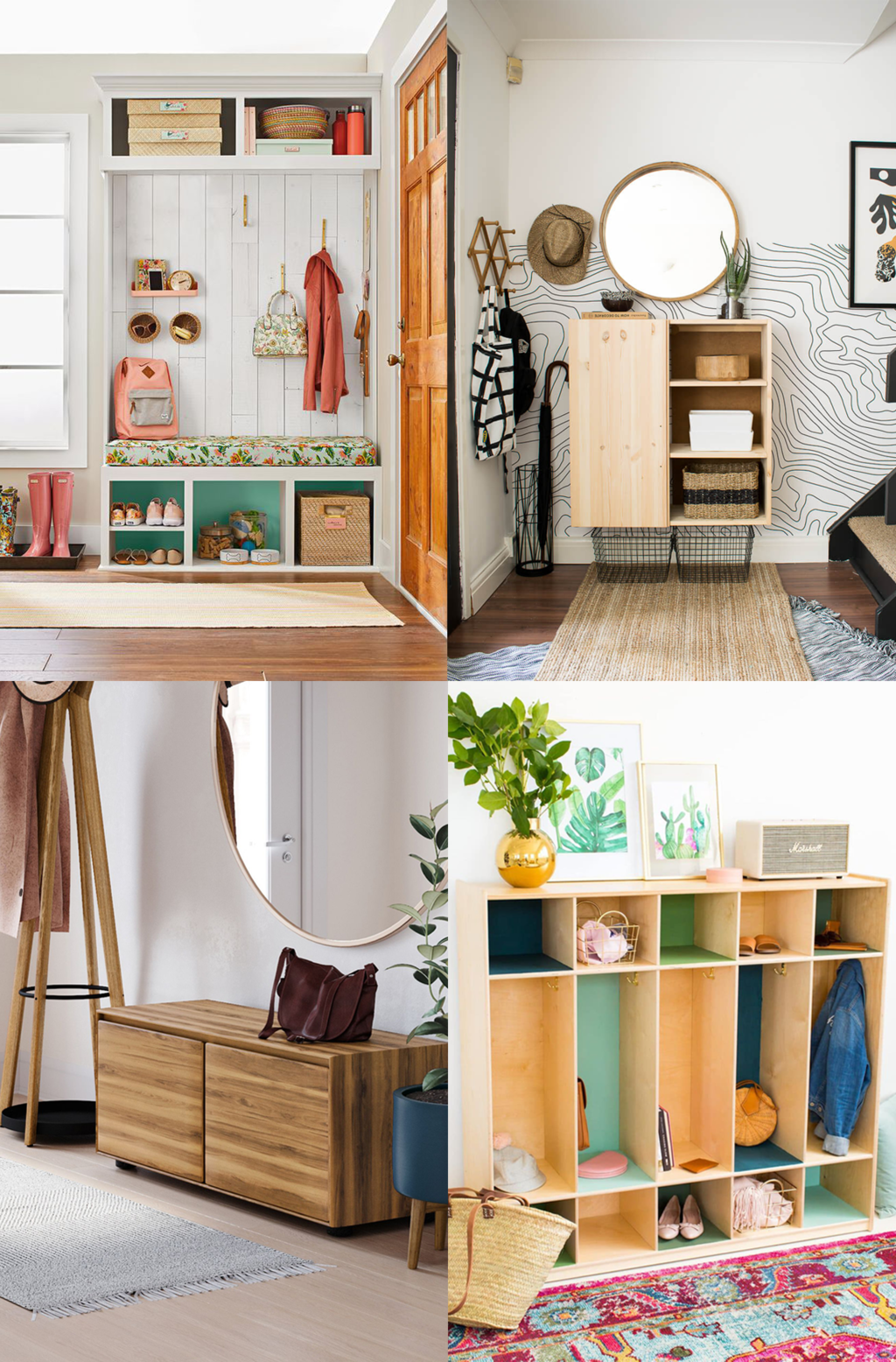Seasonal Swap Systems
Rotate your entryway storage efficiently through Canadian seasons - from winter boots to summer sandals
Canada's dramatic seasons require different entryway needs throughout the year. A smart seasonal rotation system keeps current items accessible while storing off-season gear efficiently.
Seasonal Storage Solutions

Labeled Seasonal Bins
Clearly labeled storage bins make seasonal swaps quick and organized.
- Separate bins for Winter, Spring, Summer, Fall
- Clear labeling prevents confusion
- Stackable design saves space
- Durable plastic protects contents
- Easy to access when swap time arrives

Modular Storage System
Flexible storage that adapts to different seasonal needs throughout the year.
- Reconfigure for each season's requirements
- More boot storage in winter, less in summer
- Adjustable shelving and hooks
- Works in closets or entryways
- Grows with changing needs
Seasonal Needs by Quarter
Winter (December - February)
Front and center:
- Heavy winter coats and parkas
- Snow boots and winter boots
- Toques, scarves, and mittens
- Boot trays and drying mats
- Snow brushes and ice scrapers
Store away: Sandals, light jackets, spring shoes, sun hats, umbrellas
Spring (March - May)
Front and center:
- Rain jackets and windbreakers
- Rain boots and transitional shoes
- Umbrellas within easy reach
- Light scarves and layers
- Mud-tracking prevention supplies
Store away: Heavy winter coats, snow boots, thick mittens, winter accessories
Summer (June - August)
Front and center:
- Light jackets and hoodies
- Sandals and summer shoes
- Sun hats and sunglasses
- Beach bags and pool gear
- Sunscreen station
Store away: All heavy coats, boots, winter accessories, rain gear
Fall (September - November)
Front and center:
- Layering pieces and sweaters
- Closed-toe shoes and light boots
- Light scarves and hats
- School bags and backpacks
- Reusable shopping bags
Store away: Summer sandals, beach gear, tank tops, sun hats
Seasonal Swap Best Practices
- Schedule swap days: Mark your calendar for seasonal swaps (typically late March, June, September, and November).
- Clean before storing: Always clean and dry items before packing them away for the season.
- Inspect while swapping: Check for damage, needed repairs, or items to donate during each swap.
- Label everything: Clearly label bins with season and contents for easy identification.
- Transition period: Keep a few items from each season during transition weeks when weather is unpredictable.
- Inventory lists: Keep a list of what's in each bin to avoid unnecessary digging.
- Vacuum seal bulky items: Use vacuum bags for puffy winter coats to save storage space.
- Climate control: Store seasonal items in temperature-controlled areas when possible.
Where to Store Off-Season Items
Ideal Storage Locations
Best places for seasonal storage:
- Bedroom closet top shelves
- Under-bed storage containers
- Hall closet back sections
- Basement dry areas
- Storage locker (apartment buildings)
Avoid These Locations
Not suitable for seasonal storage:
- Damp basements (mold risk)
- Uninsulated garages (extreme temperatures)
- Outdoor sheds (moisture and pests)
- Near heating vents (damage risk)
- Direct sunlight areas (fading)
Small Space Solutions
Limited storage options:
- Vacuum bags to compress items
- Hanging organizers on closet doors
- Overhead storage in entryway
- Slimline bins that slide under furniture
- Donate more, store less
Seasonal Swap Day Checklist
Before You Swap
Preparation steps:
- Check 10-day weather forecast to confirm timing
- Set aside 2-3 hours for thorough swap
- Gather cleaning supplies and laundry baskets
- Have donation bags ready
- Locate all seasonal storage bins
During the Swap
Execution steps:
- Remove all current season items from entryway
- Clean and inspect each item before storing
- Bring out next season's items
- Wipe down all entryway surfaces
- Organize new season's items by frequency of use
- Update any labels or lists
Canadian Regional Timing
Adjust seasonal swap timing based on your region
Atlantic & Eastern
- Winter gear: November 1
- Spring transition: Mid-April
- Summer gear: June 1
- Fall transition: Early September
Prairies & Central
- Winter gear: October 15
- Spring transition: Late April
- Summer gear: Mid-June
- Fall transition: Mid-September
West Coast
- Winter gear: December 1
- Spring transition: Early March
- Summer gear: May 15
- Fall transition: Late October
Storage Safety
Never store damp items - this leads to mold and mildew. Use pest deterrents like cedar blocks or lavender sachets in storage bins. Ensure storage areas are stable and won't tip over. Keep heavy items on lower shelves and lighter items up high.